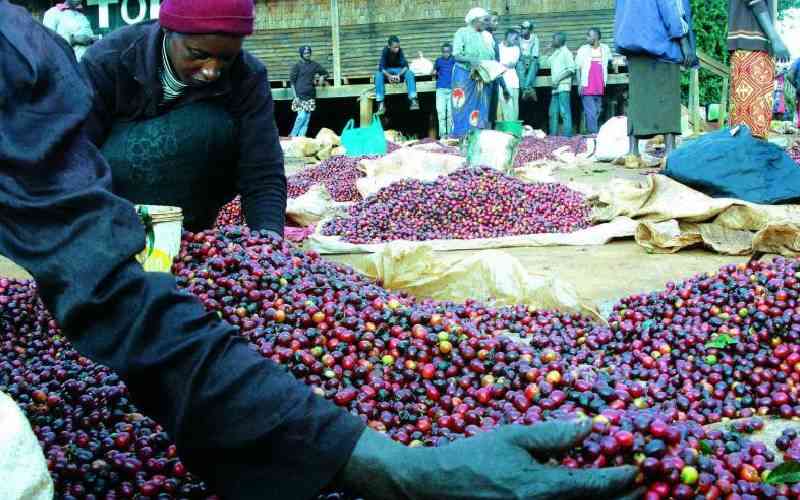Kenya’s tea competitiveness in the world market faces serious risk as a result of the persistent and often destructive industrial unrest which has plagued the industry in the past two years.
Workers in the commercial tea plantation sector went on a prohibited strike on the October 18, which lasted for three weeks up to November 7 when the Employment Courts ordered the Union leadership to call off the trike that had been pushing for negotiation of the 2016-2017 CBA and the implementation of the 2014-2015 CBA award by the Employment and Labour Relations Court in June 2016 of (15 per cent each year) which is still under contestation at the Court of Appeal.
The plantation enterprises have since awarded an increase of between 7 per cent and 8 per cent each year for the period 2014-2015 in an interim basis awaiting the determination of the appellate court.
The plucking labour piece rate in the plantations now stands at (Sh 13.65-15.65 per kg) while the plucking rates in the smallholder sub-sector ranges from Sh8 to Sh12 per kilogramme.
The smallholder initial payment for green leaf is Sh16 which leaves the farmer with little amounts after meeting the plucking labour costs.
The spiral effect thereof is that the closer the smallholder farmer to the plantation enterprises, the higher the labour rates he or she has to bear.
The minimum piece work per day in the plantations has been 33 kgs since the 1960s.
However, owing to industry investments in high yielding clones of tea bushes and improved crop husbandry practices coupled with continuous training, workers are able to pluck over 45 kgs per day whereby with the plucking labour piece rate (Sh13.65-15.65 per kg), it implies that the minimum daily wage for tea plucking ranges from Sh450.45 to Sh516.45 while the monthly wage is between Sh11,712 to Sh17,043.
On top of this, plantation enterprises also incur other labour-related costs (free housing; medical facilities and treatment as well as sick off, electricity, water, education, gratuity, annual leave and travelling allowance etc. adding up to another close to 50 per cent of the total labour costs. The benefits push the total cost of plucking labour per person to a high of Sh23.48 per kg of Green Leaf (Min Daily wage of Sh675.68)
The minimum agricultural wages controlled under the Agricultural Wages Order is currently Sh269.40 per day and Sh6,415.55 per month for unskilled agricultural worker (Regulation of Wages (Agricultural Industry) (Amendment) Order, 2017).
However, plantation enterprises in Kenya should also invest in R&D and training on machine plucking standards to closely match the quality of their machine plucked Green Leaf to that of hand plucked.
Unless reversed, the trend to push for higher rates of pay in the industry without commensurate productivity improvement coupled with a depressed tea auction prices could easily plunge the entire sector into a crisis like what happened to tea farming in South Africa, which has been declining almost to the ground since 2000 mainly due to violent industrial disputes leaving so many jobless in the remote rural areas where tea growing is practised.
Further, the tea sector is the largest industrial earner of foreign exchange into the Kenyan economy and a huge source of revenues for the Government, contributing 4 per cent of the Country’s Gross Domestic Product and 26 per cent of the country’s export earnings.
The sector also contributes significantly to rural development in the country with majority of the Kenyan rural households depending directly or indirectly on the commodity for their livelihoods.
The Kenya Tea Growers Association (KTGA) is cognisant of the precarious situation the industry is at and calls on the union leadership to approach the wage issue with sobriety and caution if the over one million plus dependants to the industry have to be secured in the foreseeable future.
Stay informed. Subscribe to our newsletter
He further suggests that going forward, policy guidelines on labour productivity championed by the Ministry of Labour and EAC affairs and the tripartite National Productivity and Competitive Centre should come up with a Wage Advisory Committee to provide guidelines on labour productivity levels and the piece rate (taking into account socio-economic conditions).
The National Productivity and Competitive Centre should also assist the plantation enterprises to roll out productivity improvement models.
Other initiatives should include monitoring task output parameters against the benchmarks. Adoption of automation and technology should be a consideration which is highly adopted amongst the tea plantation enterprises (Argentina and India).
-The writer is the CEO of Kenya Tea Growers Association (KTGA)
 The Standard Group Plc is a
multi-media organization with investments in media platforms spanning newspaper
print operations, television, radio broadcasting, digital and online services. The
Standard Group is recognized as a leading multi-media house in Kenya with a key
influence in matters of national and international interest.
The Standard Group Plc is a
multi-media organization with investments in media platforms spanning newspaper
print operations, television, radio broadcasting, digital and online services. The
Standard Group is recognized as a leading multi-media house in Kenya with a key
influence in matters of national and international interest.
 The Standard Group Plc is a
multi-media organization with investments in media platforms spanning newspaper
print operations, television, radio broadcasting, digital and online services. The
Standard Group is recognized as a leading multi-media house in Kenya with a key
influence in matters of national and international interest.
The Standard Group Plc is a
multi-media organization with investments in media platforms spanning newspaper
print operations, television, radio broadcasting, digital and online services. The
Standard Group is recognized as a leading multi-media house in Kenya with a key
influence in matters of national and international interest.









